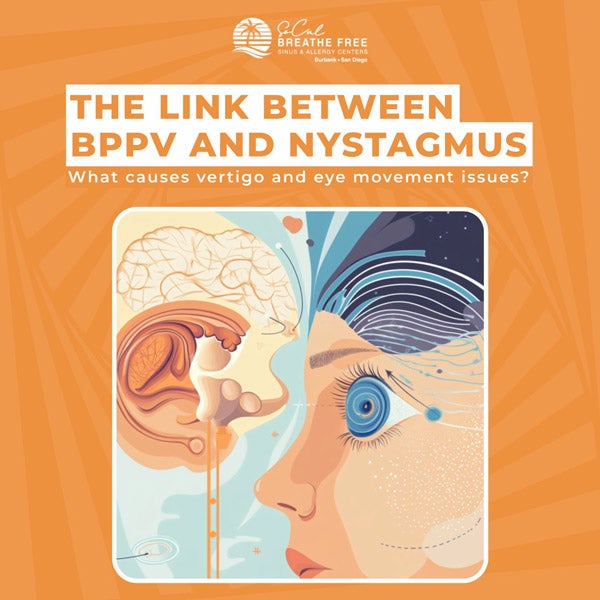The Link Between BPPV and Nystagmus
If you’ve ever felt like you or your surroundings are spinning or moving when in reality they are not, you might be experiencing a sensation called vertigo.
One of the most common causes of vertigo is Benign Paroxysmal Positional Vertigo (BPPV). Vertigo is a common symptom of BPPV. Nystagmus—the rapid and uncontrollable movements of the eye—is also a clear indication of BPPV.
If you’re dealing with either BPPV or nystagmus, you should know that the two are directly linked. How? Let’s find out.

What Is BPPV?
Benign paroxysmal positional vertigo (BPPV) is an inner ear disorder that causes brief episodes of positional vertigo. Vertigo is characterized by a false sensation of spinning. When someone experiences vertigo, they feel as though they or their surroundings are spinning, when in fact, they are not.
What Causes BPPV?
BPPV occurs when otoconia—small crystals of calcium carbonate—become loose and dislodged from their location on the utricle and migrate into the fluid-filled spaces of the inner ear, including the semicircular canals (SCC). The SCCs are sensitive to gravity and changes in head position. This can trigger episodes of vertigo.
The issue often arises when the head is moved—tilting, looking up or down, getting in or out of bed, or rolling over can all cause symptoms to flare.
Common Symptoms of BPPV:
- Vertigo (a false spinning sensation)
- Loss of balance
- Visual disturbances (often due to associated nystagmus)
- Nausea
- Vomiting
- Feeling faint
What Is Nystagmus?
Nystagmus is the rapid, uncontrollable, and rhythmic movement of the eyes. The eyes may move side to side, up and down, or in a circular pattern. Nystagmus typically affects both eyes and may be temporary or permanent.
It’s often seen in people with dizziness, vertigo, balance disorders, or other inner ear issues.
What Causes Nystagmus?
Nystagmus can result from neurological conditions, inner ear dysfunction (which affects coordination and balance), eye disorders, or head trauma.
Children born with nystagmus due to brain or eye abnormalities should be evaluated promptly by an eye care specialist.
Common Symptoms of Nystagmus:
- Shaky or blurry vision
- Vertigo (a spinning sensation)
- Oscillopsia (the feeling that your surroundings are moving)
- Dizziness
- Balance issues
BPPV and Nystagmus: The Connection
When someone has BPPV, tiny calcium crystals in the inner ear become dislodged, disturbing the balance system. This movement can trigger nystagmus, which leads to visual symptoms.
Because BPPV causes abnormal stimulation of the semicircular canals, nystagmus is a key diagnostic indicator. A doctor may use the Dix-Hallpike maneuver to observe for nystagmus and confirm a BPPV diagnosis.
How the Dix-Hallpike Test Works:
- While sitting upright with legs extended, the patient’s head is turned 45 degrees to one side.
- The patient is then quickly laid back so the head is positioned slightly off the table with one ear facing downward.
- The doctor observes eye movements (nystagmus) to confirm the diagnosis.
- If nystagmus is present, it strongly supports a diagnosis of BPPV.
- If no nystagmus is seen, additional tests may be needed to determine the cause of vertigo.
Get in Touch With SoCal Breathe Free for Expert Care
If you’ve felt like the room is spinning more than a few times, it may be more than just dizziness—it could be BPPV. Lingering symptoms like dizziness, nausea, visual issues, and balance problems deserve proper evaluation.
Our team at SoCal Breathe Free is here to help. We’ll accurately diagnose your condition and craft a personalized treatment plan that meets your unique needs
